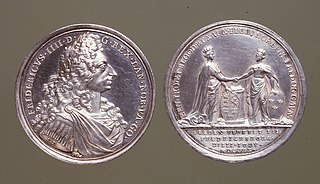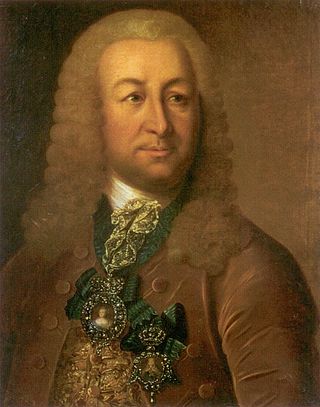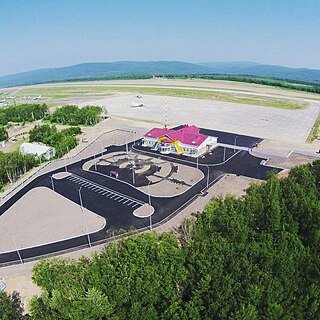Events
| | This section needs expansion. You can help by adding to it. (July 2016) |
| Years in Russia: | 1717 1718 1719 1720 1721 1722 1723 |
| Centuries: | 17th century · 18th century · 19th century |
| Decades: | 1690s 1700s 1710s 1720s 1730s 1740s 1750s |
| Years: | 1717 1718 1719 1720 1721 1722 1723 |
Events from the year 1720 in Russia
| | This section needs expansion. You can help by adding to it. (July 2016) |
| | This section needs expansion. You can help by adding to it. (July 2016) |
| | This section needs expansion. You can help by adding to it. (July 2016) |

The Great Northern War (1700–1721) was a conflict in which a coalition led by the Tsardom of Russia successfully contested the supremacy of the Swedish Empire in Northern, Central and Eastern Europe. The initial leaders of the anti-Swedish alliance were Peter I of Russia, Frederick IV of Denmark–Norway and Augustus II the Strong of Saxony–Poland–Lithuania. Frederick IV and Augustus II were defeated by Sweden, under Charles XII, and forced out of the alliance in 1700 and 1706 respectively, but rejoined it in 1709 after the defeat of Charles XII at the Battle of Poltava. George I of Great Britain and the Electorate of Hanover joined the coalition in 1714 for Hanover and in 1717 for Britain, and Frederick William I of Brandenburg-Prussia joined it in 1715.

Frederick I was King of Sweden from 1720 until his death, having been prince consort of Sweden from 1718 to 1720, and was also Landgrave of Hesse-Kassel from 1730. He ascended the throne following the death of his brother-in-law absolutist Charles XII in the Great Northern War, and the abdication of his wife, Charles's sister and successor Ulrika Eleonora, after she had to relinquish most powers to the Riksdag of the Estates and thus chose to abdicate. His powerless reign and lack of legitimate heirs of his own saw his family's elimination from the line of succession after the parliamentary government dominated by pro-revanchist Hat Party politicians ventured into a war with Russia, which ended in defeat and the Russian tsarina Elizabeth getting Adolf Frederick of Holstein-Gottorp instated following the death of the king. Whilst being the only Swedish monarch called Frederick, he was Frederick I of Hesse-Kassel and thus Frederick I also of Sweden, though other Swedish monarchs with non-repeating names had not been enumerated.

The Treaty of Nystad was the last peace treaty of the Great Northern War of 1700–1721. It was concluded between the Tsardom of Russia and the Swedish Empire on 10 September [O.S. 30 August] 1721 in the then Swedish town of Nystad. Sweden had settled with the other parties in Stockholm and in Frederiksborg (1720).

In Swedish and Finnish history, the Age of Liberty was a period that saw parliamentary governance, increasing civil rights, and the decline of the Swedish Empire that began with the adoption of the Instrument of Government in 1719 and ended with Gustav III's self-coup in 1772. This shift of power from the monarch to parliament was a direct effect of the Great Northern War.

Holstein-Gottorp is the historiographical name, as well as contemporary shorthand name, for the parts of the duchies of Schleswig and Holstein, also known as Ducal Holstein, that were ruled by the dukes of Schleswig-Holstein-Gottorp, a side branch of the elder Danish line of the German House of Oldenburg. Other parts of the duchies were ruled by the kings of Denmark.
The Treaties of Stockholm are two treaties signed in 1719 and 1720 that ended the war between Sweden and an alliance of Hanover and Prussia.

The Chulyms, also Chulym Tatars, are a Turkic people in the Tomsk Oblast and Krasnoyarsk Krai in Russia. According to the 2020 census, there were 382 Chulyms in Russia.

The Treaty of Frederiksborg was a treaty signed at Frederiksborg Castle, Zealand, on 3 July 1720, ending the Great Northern War between Denmark–Norway and Sweden.

The Kingdom of Imereti was a Georgian monarchy established in 1455 by a member of the house of Bagrationi when the Kingdom of Georgia was dissolved into rival kingdoms. Before that time, Imereti was considered a separate kingdom within the Kingdom of Georgia, of which a cadet branch of the Bagrationi royal family held the crown.

Count Jean Armand de L'Estocq was a French adventurer who wielded immense influence on the foreign policy of Russia during the early reign of Empress Elizabeth.

The Battle of Grengam, Finnish: Flisön taistelu of 1720 was the last major naval battle in the Great Northern War that took place in Åland, in the Ledsund strait between the island communities of Föglö and Lemland. The battle marked the end of Russian and Swedish offensive naval operations in Baltic waters. The Russian fleet conducted one more raid on the Swedish coast in spring 1721, whereupon the Treaty of Nystad was signed, ending the war.

The Collegium was a type of government departments in Imperial Russia. It was established in 1717 by Peter the Great to replace the system of Prikaz. They were housed in the Twelve Collegia building in Vasilyevsky Island, Saint Petersburg. In 1802, the Collegium was incorporated into and gradually replaced by the newly created system of Ministries.

George VII, of the Bagrationi dynasty, was King of Imereti in the periods of 1707–11, 1712–13, 1713–16, and 1719–1720.

The College of War was a Russian executive body, created in the government reform of 1717. It was the only one of the six original and three later colleges to survive the decentralising reforms of Catherine II of Russia. Under Paul I, it became the model for a newly centralised government.

The Gold Sword for Bravery was a Russian award for bravery. It was set up with two grades on 27 July 1720 by Peter the Great, reclassified as a public order in 1807 and abolished in 1917. From 1913 to 1917 it was renamed the Saint George Sword and considered one of the grades of the Order of St. George.

Jeremias III was Ecumenical Patriarch of Constantinople twice, in 1716–1726 and 1732–1733.

Nicolas de Fer was a French cartographer and geographer. He also was an engraver and publisher. His works focused more on quantity than quality, there were often geographical errors, and they were more artistic than accurate.

Nikolayevsk-on-Amur Airport is an airport serving the locality of Nikolayevsk-on-Amur, in the Khabarovsk Krai of Russia.
Events from the year 1758 in Russia
![]() Media related to 1720 in Russia at Wikimedia Commons
Media related to 1720 in Russia at Wikimedia Commons